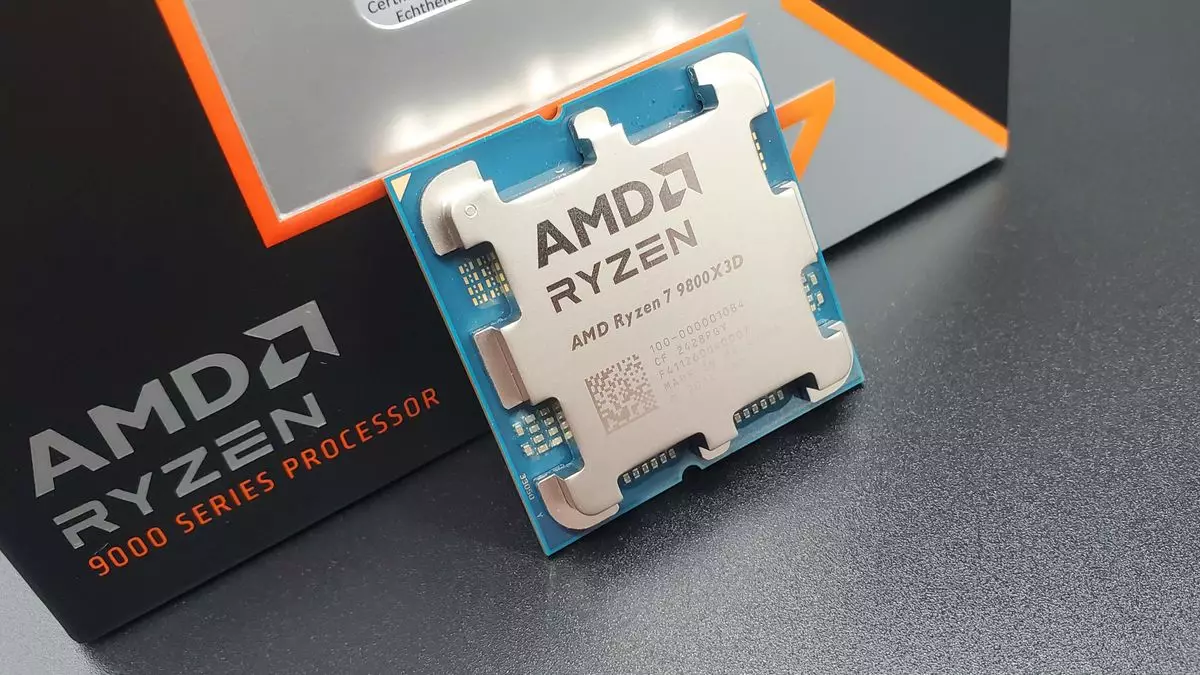The CPU market has seen dynamic shifts over recent months, marked vividly by the release of new line-ups from both Intel and AMD. While Nvidia’s latest graphics cards command attention—clear indicators of the industry’s enthusiasm—it’s crucial not to overlook the significant developments happening within the CPU segment. AMD’s emergence with its 9000-series ‘Zen 5’ processors comes amid lukewarm offerings from Intel’s Core Ultra 200S ‘Arrow Lake’ line, resulting in a varied competitive landscape that warrants deeper analysis.
During the recent Q4 2024 earnings call, AMD’s CEO, Dr. Lisa Su, highlighted a remarkable milestone—the highest sell-out of products in many years coinciding with the holiday season. This claim indicates not just a surge in consumer interest, but suggests a strategic advantage for AMD in positioning its gaming CPUs. Particularly noteworthy is the demand for the Ryzen 7 9800X3D, which has been challenging to find at reasonable prices since its launch. This phenomenon confirms AMD’s assertion that their products are resonating with consumers, although one must temper excitement with the recognition that stock sellouts can also be the result of inadequate supply rather than sheer demand alone.
The landscape for CPUs has significantly shifted in AMD’s favor, primarily due to the less persuasive response to Intel’s recent Core Ultra series. The latter’s launch has been described as underwhelming, lacking the innovative push looks forward in cutting-edge technology. Many of Intel’s previous generations were hampered by stability issues, leading to a more conducive environment for AMD to gain traction in the market.
Although AMD’s recent successes point to a robust demand for its CPUs, it is essential to consider the broader implications of supply constraints. The term “paper launch” was recently revived in discussions about Nvidia’s graphics offerings, reflecting a scenario in which products are marketed without sufficient availability to meet consumer needs. In contrast, while AMD’s 9000-series launch may not have suffered the same fate, shortages have nevertheless prompted concerns over whether the company can effectively fulfill the demand it has generated.
Dr. Su reiterated that AMD is striving to meet this demand, hinting at the company’s commitment to ensuring product availability. As demand continues to soar in early 2024, it remains to be seen whether AMD’s resolve will suffice in alleviating the supply issues that have persisted since the launch of their flagship products. However, success on the sales floor does not solely hinge on demand; it also emphasizes the necessity for sound inventory management and distribution strategies.
On the mobile front, both AMD and Intel are vying for user attention and market share. AMD’s AI 300 ‘Strix Point’ processors are already finding a home within various laptop models and handheld devices like the OneXPlayer OneXFly F1 Pro, suggesting a diversification strategy that could bolster its presence in the mobile market. Intel’s counter-offering, the Core Ultra 200V ‘Lunar Lake’ chip, offers efficiency but falls short in high-performance gaming contexts.
The competition in the mobile sector is notably more balanced than in desktops, reflecting the complexities of consumer preferences across different device categories. Dr. Su’s acknowledgment of seasonal performance within AMD further suggests a nuanced understanding of consumer purchasing behavior, particularly concerning the influx of new technology in early quarters.
Looking ahead, AMD will have to navigate the fluctuating tides of market demands while also strategizing around the forthcoming RX 9070 and RX 9070 XT graphics cards. The interplay between CPUs and GPUs remains a vital aspect of consumer decision-making, and how well AMD performs in delivering both categories will ultimately shape its performance in the market.
Furthermore, with the imminent launch of additional hardware and the projected seasonal shifts, AMD must continue leveraging its advantages while mitigating supply headaches. Dr. Su’s comments reflect awareness of the balancing act involved in capitalizing on current momentum—success hinges not just on product innovation, but also on ensuring that supply chains are adequately equipped to meet demand.
The recent developments underscore a flourishing phase for AMD within a competitive CPU landscape. Despite significant demand, the company now faces the dual challenge of enhancing supply to meet consumer expectations. As we witness an evolving dialogue in the tech industry, the outcome of AMD’s strategies will have far-reaching consequences, setting the stage for future innovations and rivalries.

